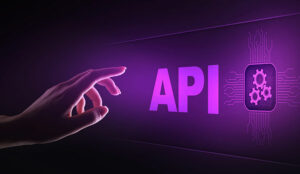These days, it’s all about the customer. According to McKinsey, improving the customer experience was the top priority for customer care leaders in 2022 — an emphasis that will only continue in the coming years.
In order to elevate the customer experience, customer support teams need the right people. Unfortunately, that’s yet another challenge, with the same McKinsey research highlighting that customer support teams are struggling with attrition.
It feels like you need to do more with less and there’s no easy solution. But when an alarming 91% of employees admit they’re frustrated with their workplace technology, building an effective customer support tech stack certainly can’t hurt.
Technology isn’t an answer to all of your problems, but it can be a powerful aid in the form of faster, smoother workflows — provided you find the right tools.
Not sure how to make that happen? Kaytlin Louton at Assembled has put together five tips to build a customer support tech stack that exceeds your team’s (and your customers’) expectations.
1. Identify Your Pain Points
The right technology will help you solve a problem. So first, you need to understand exactly what that problem is. Ask your team this: What are we struggling with right now?
Are you saddled with an unreasonably high call volume? Are you struggling to staff at the appropriate levels? Is it challenging to manage your BPOs or other partners without a bunch of complex and time-consuming workarounds?
As you and your team brainstorm your own biggest pain points, remember to consider the customer journey too.
Your team’s struggles could be fueling different challenges for your customers — like long hold times or inadequate automated responses. The right technology solutions will make things better for both your team and your customers.
When you do identify a problem, use a five whys analysis (it’s a simple exercise that involves asking, “Why?” five times) to dig down to the root cause of the issue. Here’s an example:
Problem: Our Customers Experience Way Too Long Hold Times.
- Why? We can’t get to all of the calls in a timely manner.
- Why? Our call volume is way too high.
- Why? Our customers call us about every issue or question — big and small.
- Why? It’s the most reliable way to get in touch with us.
- Why? We haven’t taken the time to provide other solid options.
If you had stopped at the first or second “why?” you might’ve opted to increase your staffing levels to accommodate those calls.
But by digging deeper, you figure out that creating self-service options or offering live chat is likely the more sustainable way to manage your call volume. Now you can look for tech solutions that help you do those specific things, rather than patching up a surface symptom.
2. Determine Where Technology Fits In
You know what the problem is. Now it’s tempting to throw technology at it and consider it done. Problem solved. Move on.
Unfortunately, it’s rarely that easy. It’s not very often that technology on its own serves as a fix-all (although that’d be nice, wouldn’t it?). Your tech stack is most effective when it’s supplemented with other changes that don’t hinge on a fancy new software tool.
Sticking with our call volume example, perhaps you’ll roll out some new tech to create a customer knowledge base and offer an AI chatbot.
But maybe you’ll also offer training to your agents to help them get through certain issues faster. Or you’ll split up your team and your workflows to separate simple inquiries from more complex ones.
Whether you need to reset expectations, overhaul a process, or anything else, remember that technology can be a powerful addition — but it’s most effective when it’s complemented by other operational changes and improvements.
3. Involve Multiple Stakeholders
Your customer support team is obviously at the centre of your customer support tech stack. But are they the only ones that need to be able to access and use those tools? Or could other teams and stakeholders benefit from some visibility?
The marketing department might want an easy way to see customer testimonials and feedback. Or maybe it’d be helpful for the sales team to be able to understand what your current customers are contacting you about.
To put it simply, even though you’re building a tech stack specifically for customer support, don’t review and select new software tools in a vacuum.
Connect with other players who could be impacted by those changes to ensure your choices work well for them too.
4. Build a Trial Team
Here’s the good news: Plenty of customer support software options offer free trials you can use to explore the solution and determine if it will work well for your team.
You just need someone (or several people) who can dedicate the time and energy to evaluating those options.
If you can swing it, it’s helpful to set up a trial team — think of it sort of like a focus group. Similar to the above, this team can pull in multiple different stakeholders to test out new tools, consider the good and bad, and make informed decisions about what would work best for everybody.
It’s a solid development opportunity for any team members who want more involvement in team decision-making or want to take ownership over a new project.
Plus, it’s a chance to really put new tools through the wringer before you roll them out to the entire team or company.
5. Understand Integrations and Partnerships
It’s tempting to look for one, do-it-all solution. And while tech consolidation does have some merits, it can also mean ending up with one-stop-shop software that does a mediocre job at everything — but does nothing really well.
In most cases, it’s smarter to look at integrations to seamlessly connect more targeted tools. This is another thing you could ask your trial team to evaluate.
Make a list of the tools that your team already uses and wants to stick with so that the team can confirm what solutions work well with those existing platforms.
With this approach, you get the benefit of focused, specialized software without having to sacrifice automated and integrated workflows. Being this intentional means you’ll build an actual tech stack — and not a tech tangle.
Building Your Best Customer Support Tech Stack
What should your customer support tech stack look like? Well, that’s a trick question — there isn’t one right answer here.
The best customer support tech stack is one that’s customized to your team, your customers, and your unique challenges. That means your technology can (and honestly, should) look different from what other customer support teams are using.
By identifying your biggest problems, evaluating your processes, considering your existing software, and pulling in multiple stakeholders, you’ll do your due diligence and build a tech stack that’s competent and customized — rather than clunky and complex.
This blog post has been re-published by kind permission of Assembled – View the Original Article
For more information about Assembled - visit the Assembled Website
Call Centre Helper is not responsible for the content of these guest blog posts. The opinions expressed in this article are those of the author, and do not necessarily reflect those of Call Centre Helper.
Author: Assembled
Published On: 6th Feb 2024 - Last modified: 6th Dec 2024
Read more about - Guest Blogs, Assembled, Kaytlin Louton






 Assembled is a Support Operations platform that helps companies maintain exceptional customer experiences, no matter what lies ahead. Leading brands use Assembled's workforce and vendor management capabilities to make optimal staffing decisions, gain visibility into performance and productivity, and unlock new ways to serve evolving customer needs.
Assembled is a Support Operations platform that helps companies maintain exceptional customer experiences, no matter what lies ahead. Leading brands use Assembled's workforce and vendor management capabilities to make optimal staffing decisions, gain visibility into performance and productivity, and unlock new ways to serve evolving customer needs. 









